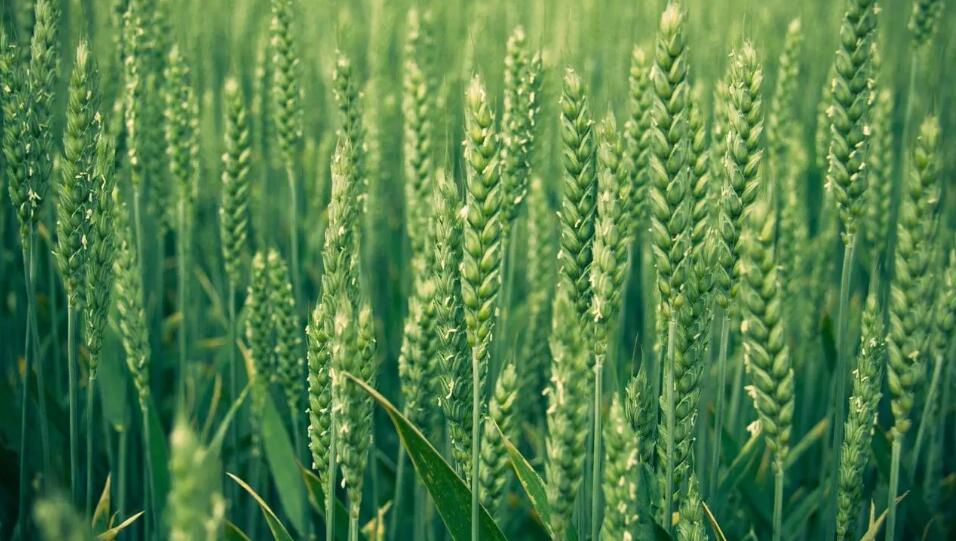LI Shujing, WU Jinzhi, HUANG Ming, WANG Chunping, LI Youjun, WANG Hongtao, ZHAO Wenxin, HUANG Xiuli, LI Wenna, LI Shuang
In order to study the differences in yield,accumulation and utilization of nitrogen (N),phosphorus (P) and potassium (K)among wheat varieties from different geographical origins and among high and low yield wheat varieties from the same geographical origin in dryland farming, 165 varieties from China(58),the International Maize and Wheat Improvement Center(CIMMYT,42)and others abroad (65)were planted in the farm of Henan University of Science and Technology in Luoyang,Henan Province, to analyze the yield and its components,the characteristics of accumulation,distribution and requirement at maturity of N,P,K.Compared with others abroad,the grain yield,grains per spike,1000-grain weight,N,P and K physiological efficiency of CIMMYT varieties were significantly increased by 21.3%,39.1%,26.4%,33.2%,22.6% and 36.1%,respectively,while those of Chinese varieties were increased by 10.5%,18.1%,24.3%,29.4%, 12.1% and 24.3%,respectively,however,the spike number,the N,P and K accumulation in stem and leaf,the N,P,K and dry matter requirements of 100 kg grains of CIMMYT and Chinese varieties decreased significantly,moreover,the increase and decrease of CIMMYT varieties were higher than those of Chinese varieties.Compared the low-yield varieties from the same geographical origin,the yield,spike number,grain number per spike and biomass of Chinese high-yield varieties were significantly increased by 122.4%,38.7%,39.3% and 96.1%,respectively;the yield,spike number and biomass of CIMMYT high-yield varieties were significantly increased by 97.6%,68.2% and 71.7%;the yield,spike number,grain number per spike,1000-grain weight and biomass of high-yield varieties of others abroad were significantly increased by 157.2%,33.0%,43.6%,35.9% and 76.4%.For Chinese varieties,compared with the low-yield varieties, the shoot and grain N,P,K accumulations of high-yield varieties were significantly increased by 98.8%,101.0%,83.7% and 118.8%,104.7%,131.2%,as well as the N,P,K uptake efficiencies were significantly increased by 93.6%,84.6% and 70.3%,the nutrient requirements for grain N,P,K content formation were significantly increased by 102.8%,109.5% and 75.9%,but the K and dry matter requirements for 100 kg grains formation were significantly decreased by 16.8% and 11.1% respectively.For CIMMYT varieties,compared with the low-yield varieties, the N,P,K uptake efficiencies in high-yield varieties were significantly increased by 68.5%,71.4% and 63.6%,as well as the nutrient requirements for grain N,P,K content formation were significantly increased by 79.2%,81.7% and 76.5%,while the N and P requirements for 100 kg grains were significantly decreased by 10.7% and 10.3%,respectively.For others abroad,compared with the low-yield varieties, the N,P, K physiological efficiencies in high-yield varieties were increased significantly by 34.7%,30.2% and 60.6%, as well as the nutrient requirements for grain N,P,K content formation were increased significantly by 73.0%,110.8% and 52.1%,while the N,P,K and dry matter requirements for 100 kg grains were significantly decreased by 26.7%,23.6%,36.8% and 24.7%,respectively.To sum up,many characteristics of grain formation and N,P,K absorption and utilization in wheat showed significant differences among different geographical origin varieties.CIMMYT varieties had higher grain number per spike,1000-grain weight,harvest index,grain N accumulation,and P,K physiological efficiency,while others abroad had higher spike numbers,N,P,K accumulation in stem and leaf,N,K accumulation in shoot and uptake efficiency,dry matter and N,P,K requirements for 100 kg grains,and the values of most indexes of Chinese varieties were between CIMMYT varieties and others abroad.Compared with low-yield varieties,high-yield varieties from the same geographical origin had the ability to improve yield components,harvest index and nutrient uptake efficiency,while increased the nutrient requirements for grain N,P,K content formation.Therefore,the N,P,K input should be increased appropriately in the production system which aimed to high yield and high nutrient content.
